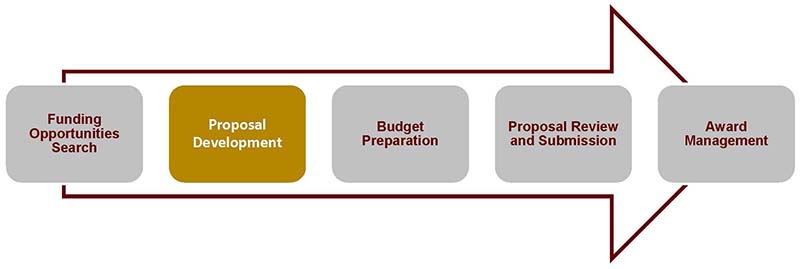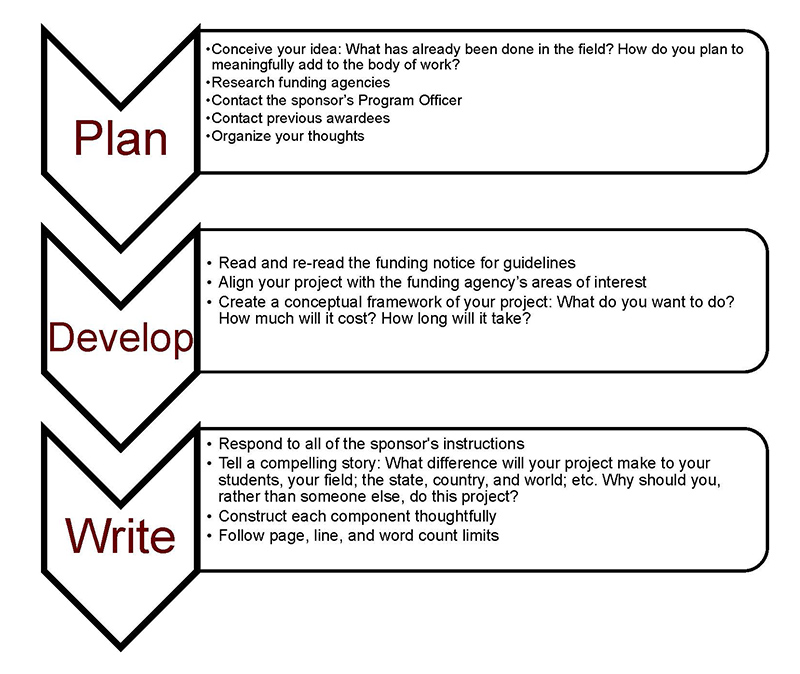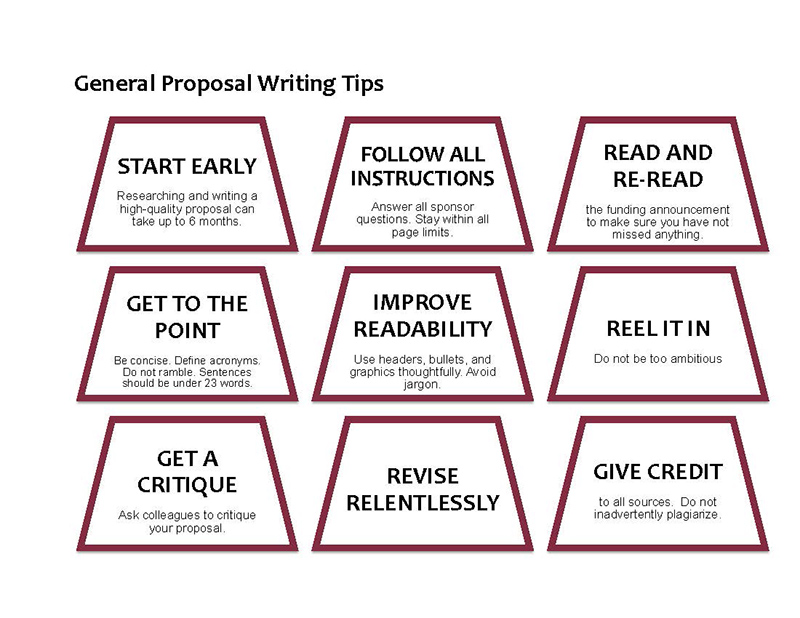
GSRD is happy to assist you in preparing your proposal. We provide information, training, and one-on-one support to faculty and staff who are developing a proposal. We will help you navigate the proposal submission process and create a work plan to meet the internal and external deadlines. The steps below are general guidelines on how the proposal development process flows.

Proposals for external funding usually have the essential sections described below. This is for informational purposes only and is not intended to replace the sponsor’s requirements. Read and re-read the instructions to make sure that you include all items that each individual sponsor requires.
|
PARTS OF A PROPOSAL |
||
|
Section |
Description |
Length |
|
Cover Letter |
|
|
|
Abstract |
|
|
|
Introduction |
|
|
|
Problem Statement |
|
|
|
Specific Aims |
|
|
|
Project Plan |
|
|
|
Evaluation Plan |
|
|
|
Dissemination Plan |
|
|
|
Sustainability Plan |
|
|
|
Budget |
|
|
|
Budget Justification |
|
|
|
References |
|
|
|
Appendix |
|
|
See The Components of a Proposal (PDF - 653 KB) for a detailed tutorial on proposal development.

Visit these websites for more information on grant writing: